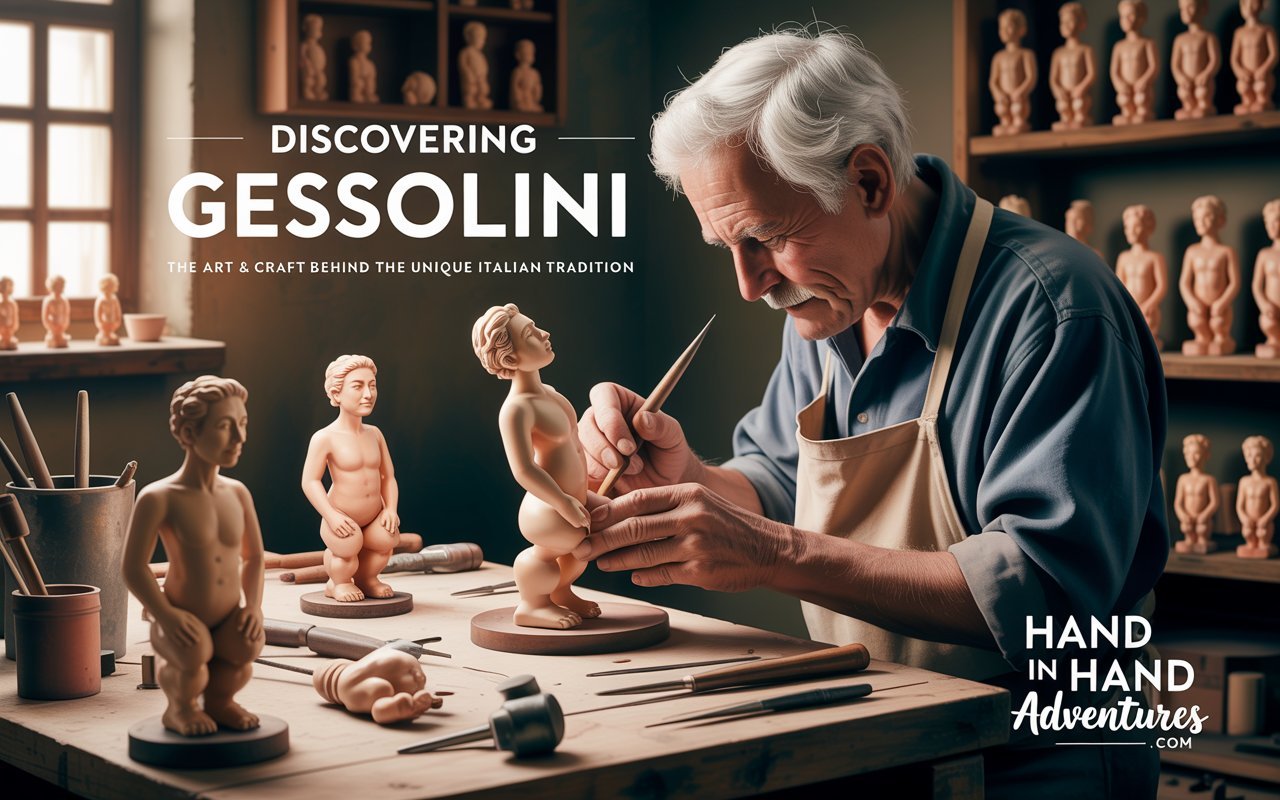Nestled in the heart of Italy, a unique tradition whispers stories of artistry and craftsmanship. Gessolini, an age-old practice that combines clay with creativity, has captivated many for generations. This remarkable art form is not just about creating beautiful objects; it encompasses a rich history and cultural significance that resonates deeply within Italian communities.
As you delve into the world of Gessolini, you’ll discover its intricate techniques, vibrant applications, and the passion behind each creation. Whether you’re an art enthusiast or simply curious about traditional crafts, this exploration promises to reveal something truly special. Join us on this journey as we uncover the layers of meaning and mastery woven into every piece of Gessolini.
The History of Gessolini
The roots of Gessolini trace back to ancient Italy, where artisans first experimented with clay. Initially used for functional purposes, these creations soon evolved into artistic expressions.
In the 14th century, Gessolini gained prominence in various regions. The craftsmanship became a symbol of local identity and pride. Each area developed its distinctive styles and techniques, reflecting the culture and creativity of its people.
As time progressed, artists began using gesso—plaster made from gypsum—to enhance their works. This innovation allowed for intricate detailing that captivated collectors and connoisseurs alike.
By the Renaissance period, Gessolini had become an integral part of Italian art history. It inspired countless artists who admired its beauty and versatility. Today, remnants of this rich past can still be seen across Italy’s charming streets and markets where skilled artisans continue to breathe life into this cherished tradition.
The Art of Making Gessolini
Crafting Gessolini is a meticulous process that showcases the skill and artistry of Italian artisans. These small, intricate figures are traditionally made from clay, often featuring vivid colors and delicate details.
The creation begins with selecting high-quality materials. Artisans shape the clay by hand or use molds for more complex designs. Each piece tells a story, reflecting rich cultural motifs inspired by local legends and historical events.
After shaping, the figures undergo drying before being fired in kilns. This step solidifies their form and prepares them for decoration. Painters then bring each Gessolini to life with vibrant hues, using techniques passed down through generations.
Attention to detail is paramount; even the tiniest embellishments require precision. The end result is not just an object but a celebration of Italian heritage that resonates deeply within communities across Italy.
The Cultural Significance of Gessolini in Italy
Gessolini holds a special place in Italy’s cultural fabric. This unique tradition reflects the country’s rich artistic heritage. Each piece embodies stories passed down through generations.
In many Italian communities, Gessolini is more than just art; it represents identity and pride. Artisans often gather to share techniques and celebrate their craft, fostering a sense of belonging.
These creations are frequently displayed during local festivals, where they draw admiration from both locals and visitors alike. The intricate designs tell tales of history and spirituality that resonate deeply within Italian culture.
As modern society evolves, Gessolini serves as a reminder of the importance of preserving traditional crafts amidst globalization. It connects people across age groups, bridging the gap between old and new worlds while celebrating shared roots.
Modern Applications of Gessolini
Today, gessolini has transcended its traditional roots. Artisans are integrating this unique craft into contemporary design. From decorative wall panels to intricate sculptures, gessolini is finding a place in modern homes and galleries.
Interior designers appreciate the versatility of gessolini. Its texture adds depth and character to spaces that might otherwise feel flat. The blend of history with innovation creates stunning focal points.
Additionally, fashion designers have begun incorporating gessolini patterns into textiles and accessories. This infusion brings an Italian heritage touch to modern wardrobes.
The charm of gessolini also extends to events and weddings. Customized pieces can elevate decor, offering guests a glimpse into Italian artistry while creating memorable experiences.
Through these applications, gessolini continues to evolve while honoring its rich tradition. It harmonizes past techniques with present-day aesthetics, making it relevant for generations yet unborn.
How to Experience and Appreciate Gessolini Yourself
To truly appreciate Gessolini, start by visiting local artisan markets in Italy. Engage with the makers and ask them about their techniques. This firsthand experience adds depth to your understanding.
Consider participating in a workshop. Many artisans offer sessions where you can try your hand at creating Gessolini yourself. It’s an immersive way to connect with this unique tradition.
Don’t forget to taste! Look for dishes that feature Gessolini or incorporate it into traditional Italian meals. The flavor profile is distinct and worth savoring.
Explore online resources as well; documentaries often showcase the intricate process behind making Gessolini. Watching these can deepen your appreciation for the craft.
Share what you learn with others through social media or community events. Spreading awareness helps keep this beautiful art alive and thriving in our modern world.
Preserving the Tradition: Challenges and Efforts
Preserving the art of Gessolini is no easy task. Modernization and globalization pose significant challenges. Younger generations often gravitate toward contemporary crafts, leaving traditional methods at risk.
Efforts to sustain this unique heritage are underway. Local artisans are engaging with schools to share their skills and stories. Workshops and exhibitions are also gaining traction, attracting both locals and tourists alike.
Organizations dedicated to cultural preservation have emerged as vital allies. They provide resources for training programs, ensuring that knowledge isn’t lost in time.
Social media plays a role too. Sharing videos of the intricate process behind Gessolini captivates new audiences worldwide. This digital exposure breathes life into an ancient craft, encouraging appreciation across borders.
Yet, the road ahead remains daunting. Balancing tradition with innovation will be crucial for keeping Gessolini alive in a rapidly changing world.
Conclusion
Gessolini represents more than just a craft; it embodies a rich tapestry of Italian heritage. This unique tradition captures the essence of artistry passed down through generations, showcasing not only skill but also deep cultural significance. As we delve into its history, the meticulous art of creation, and its modern applications, it’s clear that Gessolini holds an important place in Italy’s narrative.
Experiencing Gessolini firsthand can deepen your appreciation for this remarkable craft. From workshops to local markets where artisans display their works, there are many ways to engage with this tradition personally. However, as with many artisanal crafts today, preserving the authenticity of Gessolini faces challenges from modernization and mass production.
Yet efforts are being made by passionate individuals and organizations dedicated to keeping this art alive. By supporting artisans and promoting awareness about Gessolini’s importance in Italian culture, we can ensure that future generations experience its beauty.
Embracing Gessolini opens up a world filled with creativity and connection to history—a testament to human ingenuity woven seamlessly into everyday life.

